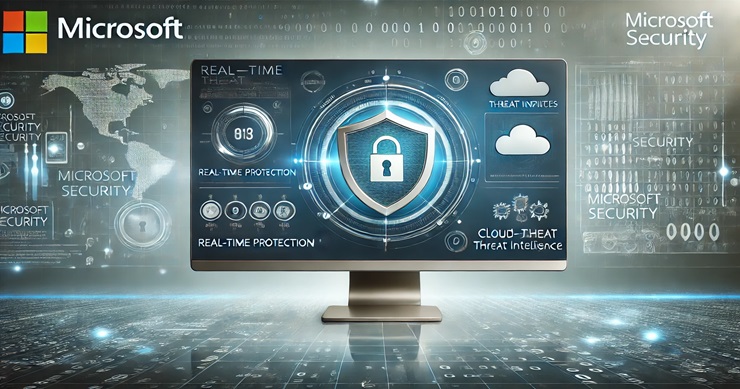Evaluating the Effectiveness of Microsoft’s Built-In Security Solutions
Introduction
In the digital age, ensuring the security of personal and professional data is paramount. With an array of antivirus software options available, users often question whether built-in security solutions are sufficient. This comprehensive blog post explores why Microsoft’s security solutions might be enough for today’s cybersecurity needs. We will delve into its history, core principles, current trends, applications, challenges, future prospects, and provide case studies to offer a thorough analysis. By the end, readers will have a clear understanding of the capabilities and limitations of Microsoft Security.
History and Background
Microsoft’s journey into cybersecurity began in earnest with the launch of Microsoft Security Essentials (MSE) in 2009. Prior to MSE, Microsoft had dabbled in security with various tools and updates, but MSE represented a concerted effort to provide a free, comprehensive antivirus solution. Key milestones in its evolution include:
- 2009: Launch of Microsoft Security Essentials.
- 2012: Introduction of Windows Defender, an enhanced version of MSE.
- 2015: Integration of Windows Defender into Windows 10 as a built-in feature.
- 2020: Rebranding of Windows Defender to Microsoft Defender Antivirus, reflecting its expanded capabilities.
These milestones highlight Microsoft’s commitment to evolving its security offerings to meet the changing threat landscape.
Core Concepts/Principles
Microsoft Security is built on several foundational principles aimed at providing robust protection with minimal user intervention:
- Real-time Protection: Continuous monitoring for threats and automatic response mechanisms.
- User-Friendly Interface: Designed to be intuitive, requiring minimal technical knowledge to operate.
- Seamless Integration: Deep integration with the Windows operating system ensures efficient performance and resource usage.
- Automatic Updates: Regular updates to virus definitions and security protocols to counter new threats.
These principles are designed to offer comprehensive protection while maintaining system performance and user convenience.
Current Trends and Developments
The cybersecurity landscape is ever-evolving, and Microsoft has kept pace with several recent trends and developments:
- Cloud-Based Threat Intelligence: Leveraging cloud computing to analyze vast amounts of data and detect emerging threats more quickly.
- Machine Learning and AI: Using advanced algorithms to predict and mitigate threats before they can cause harm.
- Enhanced Security Features: Incorporating features like ransomware protection, firewall management, and phishing prevention.
- Cross-Platform Support: Expanding protection to non-Windows devices, including macOS, iOS, and Android.
These trends demonstrate Microsoft’s commitment to providing a comprehensive and adaptive security solution.
Applications and Implications
Microsoft Security is applied in various real-world scenarios, offering significant implications for individuals and organizations alike:
- Personal Use: Home users benefit from built-in protection without the need for additional software, ensuring basic security measures are always active.
- Small Businesses: Small businesses can rely on Microsoft Security for cost-effective protection without compromising on safety.
- Educational Institutions: Schools and universities can implement Microsoft Security across their networks to protect sensitive data and ensure safe browsing for students and staff.
The implications of using Microsoft Security extend to cost savings, improved system performance, and reduced complexity in managing security.
Challenges and Solutions
Despite its many benefits, Microsoft Security faces several challenges:
- Perception of Free Solutions: Skepticism persists regarding the efficacy of free antivirus software compared to paid options.
- Advanced Threats: Sophisticated attacks may require more specialized security solutions.
- User Awareness: Ensuring users understand and utilize all available security features effectively.
Addressing these challenges involves continuous updates and enhancements to Microsoft Security, educating users on best practices, and integrating advanced threat detection technologies.
Future Prospects
Looking ahead, Microsoft Security is poised to evolve further with several promising developments:
- Enhanced AI and Machine Learning: Further integration of AI to predict and combat new threats.
- Greater Integration with Microsoft Ecosystem: Closer ties with other Microsoft services, such as Azure and Office 365, for a more comprehensive security environment.
- User Experience Improvements: Ongoing refinements to the user interface and user experience, making it even more accessible and effective.
These future prospects highlight Microsoft’s commitment to staying at the forefront of cybersecurity.
Case Studies/Examples
To illustrate the effectiveness of Microsoft Security, consider the following case studies:
- Small Business Protection: A small marketing firm implemented Microsoft Security across its network. Over three years, they reported no major security incidents and noted improved system performance and reduced IT costs.
- Educational Institution: A university deployed Microsoft Security on all campus computers. The institution experienced enhanced protection against phishing and malware attacks, ensuring a safe learning environment.
- Home User: A family used Microsoft Security on their home network, benefiting from real-time protection and ease of use. They reported fewer security issues and appreciated the seamless integration with their Windows devices.
Conclusion
In conclusion, Microsoft Security offers a robust and reliable solution for today’s cybersecurity needs. Its real-time protection, ease of use, and seamless integration with Windows make it a compelling choice for individuals, small businesses, and educational institutions. While it faces challenges, continuous improvements and future developments ensure it remains a relevant and effective security solution.
Call to Action
We encourage readers to explore the benefits of Microsoft Security by enabling it on their Windows devices. For further reading and related content, visit our website, sign up for our newsletter, and share your thoughts in the comments below. Stay protected, stay informed!
This comprehensive guide provides a thorough understanding of why Microsoft Security might be enough for today’s needs, helping readers make informed decisions about their cybersecurity measures.

